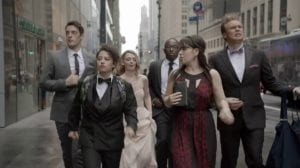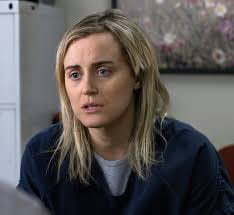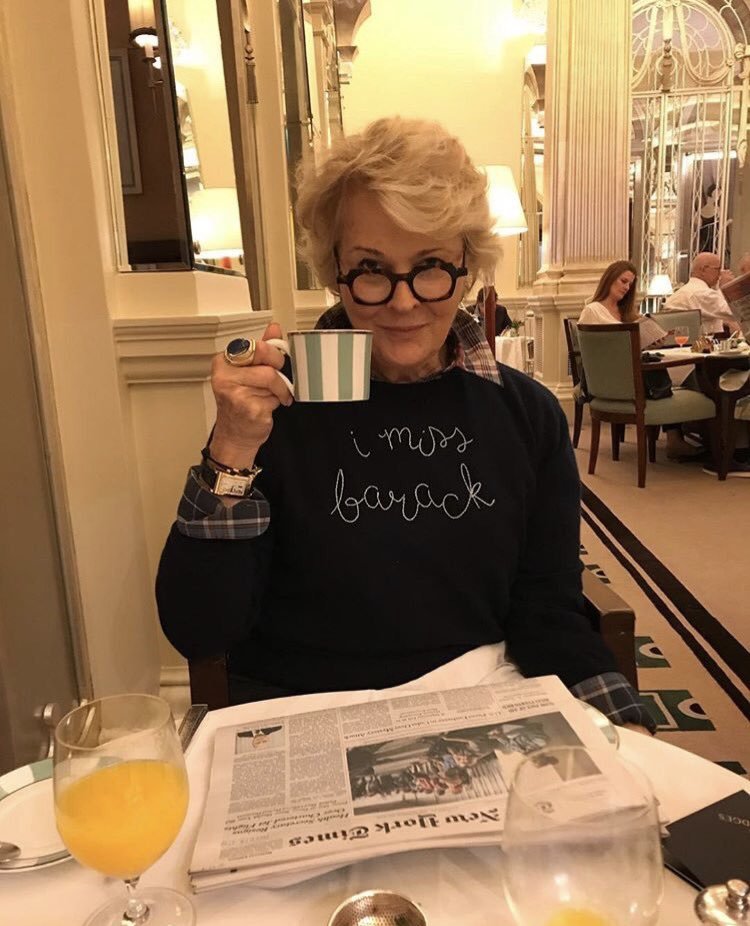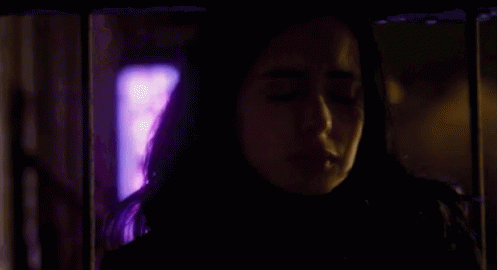After watching the first season of Broad City, the episode that stands out the most for me in terms of its visual design is the eighth episode of season 1, titled “Destination: Wedding.” Right from the beginning, the episode opens with a long sequence of Abbi, Ilana, and some friends frantically running in formal wear down a New York street, late for Abbi’s friend’s wedding in Bridgeport, CT. The opening scene continues in one uninterrupted take, and the camera frames Abbi’s and Ilana’s exhausted faces with the skyscrapers of the city. Broad City usually employs long scenes in each episode because the scene flows more naturally, so the opening scene naturally sets the storyline, and we are drawn in with curiosity to see if the group will reach their destination. It is like we as the viewers are running alongside Abbi and Ilana, making the situation more personal even if we are not physically with them.

Opening scene of “Destination: Wedding”
Another example of these natural long takes occurs within the same episode when Abbi and Ilana board a sketchy bus to Bridgeport. Although Abbi is initially relieved to be on the bus, her relief fades as she observes sick passengers, live animals on the loose, and a tank of frozen fish. The camera takes the place of Abbi’s eyes as the viewer sees the monstrosities on the bus. This perspective camera movement is used in this episode because it elevates the comedy of Abbi’s disbelief without the necessity for dialogue. Instead of hearing Abbi bicker, we as viewers can see what she sees, and subsequently understand her disgust for being on the bus. Therefore, the inclusion of long takes in Broad City, especially in episode 8, helps to make a more natural, flowing, and comfortable scene where the viewers can easily recognize the humor and emotions of Abbi’s and Ilana’s characters.
While Broad City utilizes long, uninterrupted scenes to elevate its humor, the show also uses light to solidify the realistic nature of their situation. In episode 8, the opening scene and the bus scene are normally lit with daylight, implying a passage of time as well as a tone of familiarity with the situation. Abbi and Ilana are late to a friend’s wedding, a very relatable situation to most young people. Also, the color scheme of the show does not pop with certain colors to signify a certain mood. The colors of each scene are relatively neutral, even Abbi’s and Ilana’s dresses in episode 8, because the show is trying to make the lives of these women mimic reality, along with added humor and craziness.
Overall, Broad City has a visual design that plays into the understated yet wacky comedic situations of its two protagonists, Abbi Abrams and Ilana Wexler. Whether they are late for a wedding or having a seriously improvised conversation, the cinematography and direction of each scene exude the natural, realistic atmosphere of these two women’s lives.

Broad City title card




















